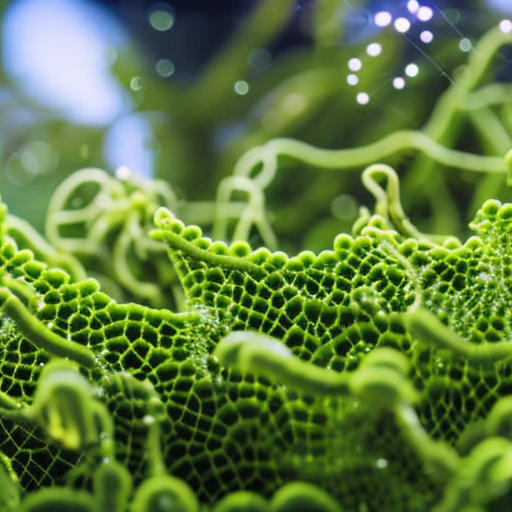Summary:
Phycology, also known as algology, is the scientific study of algae. Algae are a diverse group of photosynthetic organisms that can be found in various aquatic environments, including freshwater, marine, and even terrestrial habitats. Phycology encompasses the study of algae’s taxonomy, morphology, physiology, ecology, and their economic and environmental importance. This field of study is crucial for understanding the role of algae in ecosystems, their potential applications in various industries, and their impact on global climate change.
Taxonomy and Morphology:
Phycology involves the classification and identification of algae based on their morphological characteristics. Algae can be classified into several major groups, including green algae (Chlorophyta), brown algae (Phaeophyta), red algae (Rhodophyta), and diatoms (Bacillariophyta). Each group has distinct features, such as the presence of chloroplasts, cell wall composition, and pigmentation. The study of algae’s morphology helps scientists understand their evolutionary relationships and ecological roles.
Physiology:
The physiological study of algae focuses on their metabolic processes, growth, reproduction, and adaptation to different environmental conditions. Algae are photosynthetic organisms that convert sunlight, carbon dioxide, and water into organic compounds and oxygen through the process of photosynthesis. They also have diverse mechanisms for nutrient uptake and storage. Understanding algae’s physiology is crucial for optimizing their growth in controlled environments and harnessing their potential for biofuel production, wastewater treatment, and bioremediation.
Ecology:
Phycology plays a vital role in understanding the ecological roles of algae in various ecosystems. Algae are primary producers that form the base of the food chain in aquatic environments. They provide food and habitat for a wide range of organisms, including fish, invertebrates, and other microorganisms. Algae also play a significant role in nutrient cycling and oxygen production. However, excessive algal growth, known as algal blooms, can have detrimental effects on ecosystems, leading to oxygen depletion and the release of harmful toxins.
Economic and Environmental Importance:
The study of phycology has important implications for various industries and environmental management. Algae have immense economic potential as a source of food, pharmaceuticals, biofuels, and bioplastics. For example, certain species of microalgae are rich in omega-3 fatty acids, which are beneficial for human health. Additionally, algae can be cultivated to produce biofuels, such as biodiesel and bioethanol, as they have high lipid and carbohydrate content. Phycology also contributes to the understanding of harmful algal blooms, which can have severe impacts on fisheries, tourism, and human health.
Climate Change:
Algae play a crucial role in the global carbon cycle and have a significant impact on climate change. Through photosynthesis, algae absorb carbon dioxide from the atmosphere and convert it into organic matter. They also release oxygen as a byproduct. Algae in the ocean, particularly diatoms, are responsible for a significant portion of the Earth’s oxygen production. Additionally, certain species of algae can sequester carbon dioxide and help mitigate its effects on climate change. Understanding the interactions between algae and climate change is essential for predicting and managing the impacts of global warming.
In conclusion, phycology is a multidisciplinary field that encompasses the study of algae’s taxonomy, morphology, physiology, ecology, and their economic and environmental importance. This field of study is crucial for understanding the role of algae in ecosystems, their potential applications in various industries, and their impact on global climate change. By unraveling the mysteries of algae, phycologists contribute to our understanding of the natural world and pave the way for innovative solutions to environmental challenges.












